Shunyata RESEARCH DENALI 6000T
The most exciting moments in the lives of us, audiophiles, are defined by experiencing the sound like we've never experienced before. In such moments intimately known tracks become transformed into new thrilling pieces and the sound starts sending shivers down the spine. After this the next step is desire - the desire to own this miraculous piece of equipment that made it happen. Some enjoy those shivers quite often and end up in endless component upgrades. More seasoned veterans' ears are less easy to trick, however. To trigger alarm and ignite passion in their hearts (and ears) much more is needed. I reviewed dozens of pieces of audio equipment over the last few years and yet it happened to me maybe twice that my jaw dropped and my pulse got faster. But the price to pay was astronomic. Now the very same thing happened to me with something quite affordable, the new Shunyata's Denali.
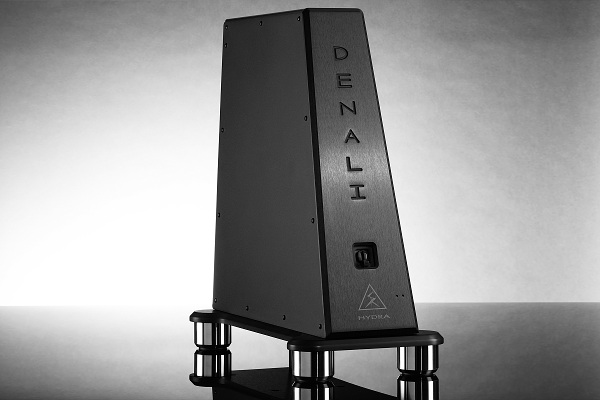
Virtual reality
It seems that audio business has arrived to a period of stagnation. The headphone boom is over, the turntable market is saturated, CD players capitulated to music servers and mobile entertainment. Producers of the 'real hifi' seem just to recycle their product lines to justify cost increases, others invest into spectacular design creations with no sound value, and in result the middle-class audio - the good value for money - is slowly vanishing. It is natural therefore that the Shunyata Denali, a device that combines excellent aesthetics with dramatic improvements to sound, is like a lightning from the clear sky. And yes, we are talking about a power filtering device, not an amplifier.
Denali concept
Since its conception in 1997 Shunyata Research is a company that takes power purification really seriously. Sure, there are other noise filtering solutions available but there are also many cars available other than Tesla. Suffice to say that any top performing set up at audio shows is usually powered up via their Hydra distribution system that has become a kind of etalon over last decade. Shunyata´s products are used at George Lucas' Sky Walker studios, Pink Floyd's Astoria Studio and David Gilmour's home studio, Rick Rubin's studios, or by Sony Japan.
The Denali is an all new creation, let´s say a Hydra descendant, with several new technologies introduced. Without giving out too much of proprietary know-how the Denali concept is described in detail on Shunyata website, together with videos and white papers that throw more light on what´s Shunyata´s design philosophy. Some of the key elements of it are discussed in the review of the Shunyata Research Python Zi-Tron powercord that Audiodrom published earlier.
So, in essence, the Denali is a component that deals with several areas of power line noise:
High frequency noise – the Denali uses patented ferroelectric material with medical-grade filters that reduce noise to measurable – 60dB from 500 KHz to 10 MHz.
Mechanical borne vibrations – the chassis of the Denali is damped by strategically positioned damping material, plus decoupled from floor by its own integrated stainless steel footers. Each outlet is isolated from the chassis with a vibration dampening gasket. All internal electronics are encapsulated in a vibration absorbent compound.
Isolation – each outlet is isolated from another by newly developed CCI modules. Dedicated high current outlets can provide 20 Amps continuous each.
Wiring – Shunyata uses its own pure copper outlets plus massive internal wiring of hollow tube type. Conductors are cryogenically treated.
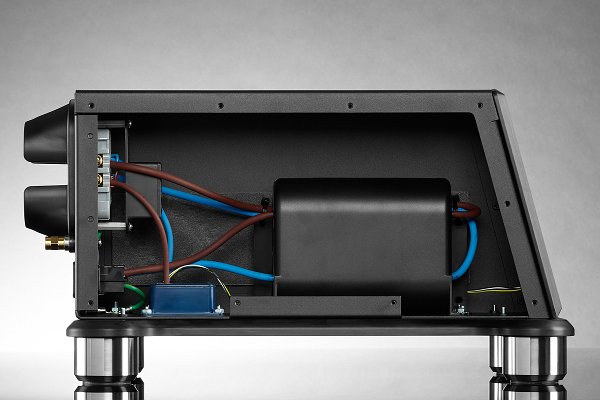
Perspective made transparent
The Denali is available in three configurations - see the overview at the end of this review. Apart from the usual desktop version the idea of making a vertical tower is great: such a console is easy to place anywhere in the proximity of a rack or in the promiximity of power amplifiers or active speakers. This way one may save a lot of money that would be otherwise necessary for buying extra lengths of power cords.
The on-off status of the Denali is indicated by a blue diode on its sloped faceplate that also hosts a cradle power switch. I regret that the EU version of the Denali has to do without the cable supports that are protruding from power outlets of the US version. Anyway, grip of EU Schuko sockets on plugs is incredibly strong - maybe too much strong as it was pretty difficult to repeatedly disconnect the power cords during my testing. The Denali also offers a ground terminal on its rear panel and thus it is not necessary to invest extra money into esoteric aftermarket solutions like Entreq or Nordost Qkore. And how does the unit 'sound'?
The contouring ability of the Denali was the first sonic benefit I noticed. Voices in three dimensions, a holographic guitar's body with its neck moving, tangible strings, a clarinet's bell moving in front of a microphone, a creaking pedal of a drum - everything can be heard with very clear outlines and crisp contours, I could almost visualize it. A standing double-bass was more of a virtual reality kind rather than a simple projection.
The second benefit is in the depth resolution. The front-to-back perspective of the Denali is not deeper than with other devices (why should it be?) but it is very transparent. The number of layers is infinite, actually it is a time-space continuum that hosts all the music events. The Denali unclutters the scene and removes the dark matter that makes competitors sound fuzzy and unorganized. It is like acquiring a brand new eygelasses.
The Denali is the very kind of audio that forces you take all the recordings from a dusty shelf and listen to them again and enjoy them. For example Dixie Chicks' I´ll Take Care of You (Wide Open Spaces) was transformed into amazing three-dimensionality of sweet violin sound that was built up on round and punchy bass fundament, no overhang, no smear, from top to bottom. And this is the third strength of the Denali: bass depth, definition and dynamics. With the Denali the music becomes very tangible and the sound materializes at your fingertips.
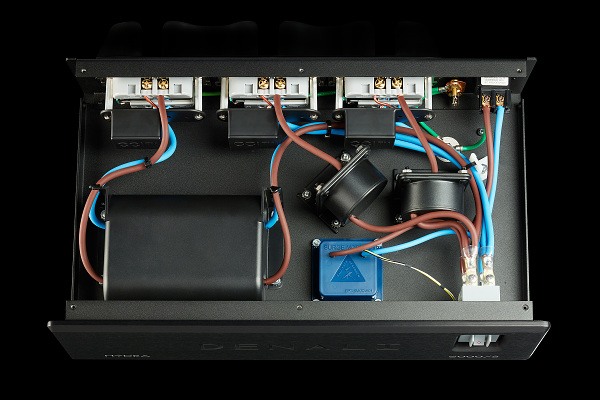
Energy of a bullet
I had several other devices to compare with the Shunyata's Denali. Synergistic Research's Powercell 8 UEF SE is in its price category excellent solution and Accuphase's PS-1220 has already become synonymous with active power filtering. The same room (but different set-up) hosted also Gigawatt's PC-4 Evo conditioner, downsized Accuphase PS-520 clean power supply and commercially successful IsoTek Aquarius, as well as Nordost Thor power distributor. To make the long story short, the Denali plays in a completely different league than the rivals.
I finally had a unit on hand that made connecting of power amplfiers possible. And not only possible - the amps benefited from it! Some of the amps I used were quite power-hungry and in dynamic peaks they asked for over 400 watts of clean power but it represented no issue whatsoever for the Denali, it was like a new tap of energy was opened. You may know Angel from Massive Attack's Mezzanine album. If not then you miss the music that is centered at the frequency range below 100Hz (its energy actually builds up significantly from 20Hz) and that is capable of stripping wallpapers from walls. The Shunyata Denali provided me with extreme lows that were so nicely defined and controlled irrespective how loud I played. The sound remained resolved, dynamic and full of energy and punch, like a bullet.
Another piece, Rodrigo y Gabriela, was a real heart-stopper. I stopped breathing to the attack of detonating transients, enormous dynamic headroom and surgically precise definition of duelling guitars. Yes, I was still listening with my power amplifiers plugged into the Denali.
Camarillo (Lincoln Mayorga & Distinguished Colleagues, Sheffield Labs) was pleasure to hear through the reference set-up of Raidho-Ansuz-Aavik. I was therefore smiling when I heard the same track in my room sound even fuller, with better imaging and tonally more correct. In my room, with incomparably cheaper electronics.
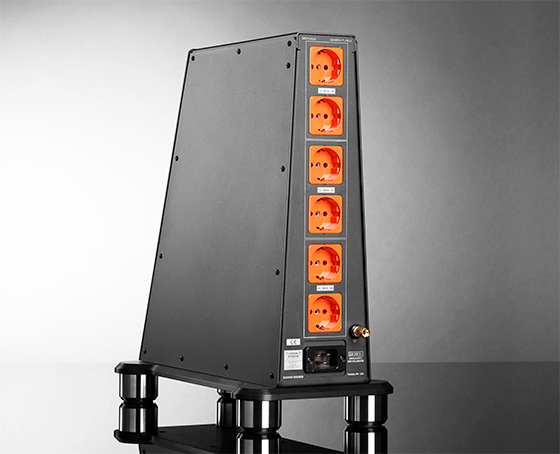
Hours and days later I got used to the Denali's way of doing things and it was time to return the mighty Accuphase PS-1220 back to the system. I did it step by step, cable by cable, listening to differences. The PS-1220 is a well-thought piece of equipment and therefore it was not surprise that what I heard was quite comparable, even though a tad less entrancing. The sound however changed when I reconnected the last power cable, the one from the power amp. The beauty withers, the controlled bass became softer and slightly smeared.
The good things are usually appreciated when you lose them. Then, like I said earlier, the desire is what remains. So, if you decide to give the Denali a try, prepare the asking price in advance, I can't imagine that you'd want to return it.
Configurations:
2000T: 2 x Schuko (15A/20A), tower (20 x 44 x 23 cm), 8kg
6000T: 6 x Schuko (15A/15A/15A/15A/20A/20A), tower (20 x 44 x 45 cm), 11kg
6000S: 6 x Schuko (15A/15A/15A/15A/20A/20A), desktop (44 x 31 x 11 cm), 6kg
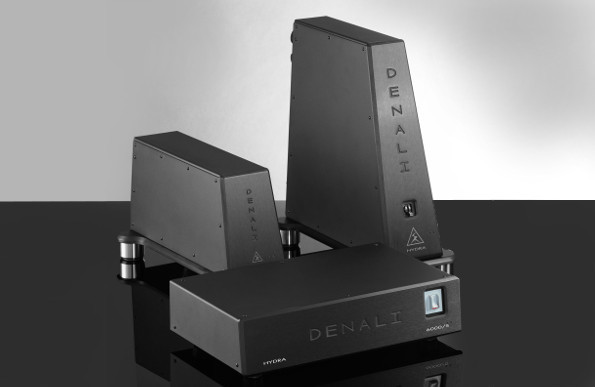
Associated components:
- Sources: Accuphase DP-720, Accuphase DG-58
- Amplifiers: Accuphase A-70, TAD-M2500 MkII, Simaudio Moon Evolution 870A & 740P, Jeff Rowland 201 monoblocks, Audiolab 8300-MB, Mark Levinson No.53 monoblocks
- Interconnects and speaker cables: Audioquest Vodka, Audioquest Redwood, Audioquest Wild, In-Akustik LS-1603 Silver,
- Loudspeakers: TAD Evolution One E1
- Power conditioning: Shunyata Research Sigma HC, Synergistic Research Powercell 8 UEF SE, Accuphase PS-1220, Nordost Thor (modified), Nordost Valhalla



